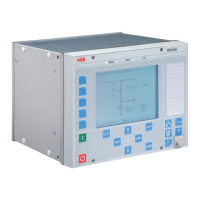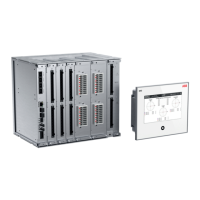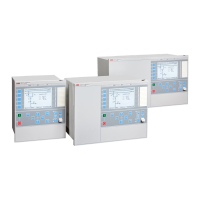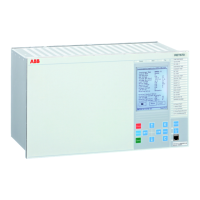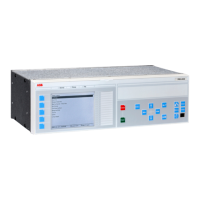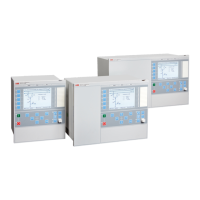If required, this CVGAPC function can be used in directional comparison protection
scheme for the power line protection if communication channels to the remote end of
this power line are available. In that case typically two NegSeq overcurrent steps are
required. One for forward and one for reverse direction. As explained before the OC1
stage can be used to detect faults in forward direction. The built-in OC2 stage can be
used to detect faults in reverse direction.
However the following shall be noted for such application:
• the set values for RCADir
and ROADir settings will be as well applicable for OC2
stage
• setting DirMode_OC2 shall be set to Reverse
• setting parameter PickupCurr_OC2 shall be made more sensitive than pickup
value of forward OC1 element (that is, typically 60% of OC1 set pickup level) in
order to insure proper operation of the directional comparison scheme during
current reversal situations
• pickup signals from OC1 and OC2 elements shall be used to send forward and
reverse signals to the remote end of the power line
• the available scheme communications function block within IED shall be used
between multipurpose protection function and the communication equipment in
order to insure proper conditioning of the above two pickup signals
Furthermore the other built-in UC, OV and UV protection elements can be used for
other protection and alarming purposes.
12.1.3.2 Negative sequence overcurrent protection
M13088-5 v4
Example will be given how to use one CVGAPC function to provide negative
sequence inverse time overcurrent protection for a generator with capability constant of
20s, and maximum continuous negative sequence rating of 7% of the generator rated
current.
The capability curve for a generator negative sequence overcurrent protection, often
used world-wide, is defined by the ANSI standard in accordance with the following
formula:
1MRK 504 163-UUS A Section 12
Multipurpose protection
Transformer protection RET670 2.2 ANSI 651
Application manual
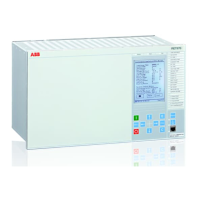
